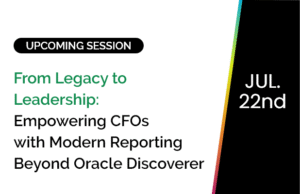Different Forms of Delivery
The way training is delivered has to change. Rigidly structured workshops and seminars will lose their prominence in favour of blended learning. Videos, online self-study, webinars, and peer-to-peer training will become more common, to suit employees’ learning styles.
“We asked respondents for their preferred methods of learning,” says Stephen Humphreys, Country Director at GoodHabitz. “45% said they preferred blended learning, with only 26% indicating classroom learning was their preferred format, and 29% cited pure e-learning.”
The shifts in learning delivery are driven in large part by employees’ experiences of everyday life.
“In our private lives it’s relatively normal to access a YouTube ‘How To’ video rather than read an instruction manual,” says Mark Bouch, Managing Director of Leading Change Limited. “This allows us access to training content anytime and anywhere. L&D will increasingly need to deliver individual training in a flexible form at the point of need.”
Adapting to employee preferences will lead to better engagement and retention of information. It will also allow just-in-time delivery of the materials employees need right now. Combined, this will make L&D more effective and less costly.
Shared training will still be relevant, whether it’s making time for teams to train together or taking part in practice exercises. Access to experts and mentors will help trainees develop critical skills in ways that online training can’t provide. But fixed classroom courses will no longer be the norm.
More Technology
New technology will shape the specifics of this training.
According to Shona Blackhall, Product Manager at Allocate Software, a wide range of learning tools are moving from education into the workplace, including ePortfolios, global collaboration sites, and Massive Open Online Courses (MOOCs). These digital training tools help more people access training at once.
But it’s the underlying systems that will bring real change. Integrating training materials and analytics into L&D systems will allow a more sophisticated approached.
“Analytics measure training spend efficacy and fix the future talent gap, and are therefore central to an L&D strategy,” says Brad Winsor, VP Workforce Analytics at SplashBI. “In the near future, most employee development plans will be designed by software, and this software is driven by data.”
AI will even play a part, according to Juliane Sterzl, VP of UK & Ireland at CoachHub, by matching employees with their best-fit coaches on digital platforms.
In the near future, most employee development plans will be designed by software, and this software is driven by data.
Augmented and virtual reality technology (AR and VR) will have a significant influence on delivery, providing immersive training that’s accessible to everyone in an organisation.
“The speed at which Augmented Reality (AR) and Virtual Reality (VR) is improving and becoming accessible and affordable means that the classroom walls are being removed,” says Shona Blackhall. “AR and VR open up a world where we can meet and communicate in real-time, in an environment which feels so comfortable you are able to converse as if you were in the room together, seeing facial expressions and body language which enable you to build a relationship and provide a conducive learning environment.”
Technology will even change where we learn.
“As innovation continues and internet signal becomes stronger, we are likely to see a lot more learning at the point of need,” says Lynsey Whitmarsh, Director of Innovation at Hemsley Fraser. Just as we search the internet for information in everyday life, employees will look up instruction and training materials out in the field or on the factory floor.
Focus on Future Leadership
Many companies need to be more pro-active in developing their next generation of leaders. Experts expect L&D to play a more significant role in this.
More forward-looking, proactive L&D departments will create more forward-looking, dynamic businesses with leaders ready to embrace change.
“There will be a broad need to re-skill or upskill managers to cope with change and uncertainty,” says Mark Bouch. “L&D professionals will need to identify and develop the competencies required for future enterprise leadership.”
Experts expect L&D to play a significant role in developing the next generation of leaders.
Skills development will be part of a broader shift in L&D, from an active role complying with regulations to a proactive one readying organisations for the future. “Instead of budgeting for training because “we think we should”, we’ll invest in developing new skills, which we will use to a competitive advantage,” says Brad Winsor.
More forward-looking, proactive L&D departments will create more forward-looking, dynamic businesses with leaders ready to embrace change.
Soft Skills
One of the most important trends will be a shift towards soft skills such as problem-solving, communication, and teamwork.
Technical skills, traditionally the backbone of L&D, are changing fast. Many are being replaced by automation, and many of those that remain are relatively easy to teach. Even those that are relevant now may be obsolete in five years.
Soft skills are more challenging to teach, more enduring in their value and are now recognised as vital to any workplace. But not all of these skills are the obvious ones.
“Self-awareness will be crucial – developing people who truly understand their strengths, skills, preferences and challenge,” says Andy Lothian, CEO of Insights Group. “People who understand their own strengths, how they can be most effective, what motivates them, and what kind of leader they will flourish under, will be much more equipped to refocus their priorities and put their skills to the test in new ways to meet modern challenges.”
Emotional intelligence and related skills are part of this package.
“Mental health is a huge issue within the workplace, and we have seen an increased emphasis on this in recent years,” says Ros Taylor, Executive Leadership and Coaching Provider at In Touch. “We know that stress can have a huge impact on employee performance, and we have seen significant changes in organisations’ attitudes to mental health, but more still needs to be done. Leaders require the skills to be able to spot the signs of stress in colleagues and should have access to support for those who are struggling.”
Adjusting to Short-Term Employment
Contracting and the gig economy are just part of a long-term trend towards short-term employment. With many employees now working as freelancers or on short-term contracts, L&D provision has to restructure for a shifting workforce.
The changes will be visible from the moment an employee joins the company.
“The traditional approach to onboarding and longer structured courses may be questioned,” says Alan Hiddleston, Manager, Corporate Sales EMEA at D2L. Story-telling and micro-onboarding will be used to bring staff up to speed and on-brand for short-term or gig economy jobs.
Employees often choose the gig economy, contracting, and part-time jobs because they offer flexibility and control. These employees expect the same from their training and are more self-motivated in undertaking it. This will fit well with more flexible and employee-driven training methods.
According to Shona Blackhall, this will change relationships to training data. Just as they track data on fitness apps, many people will want to monitor their own L&D performance, to control their data and take it with them when they change jobs. Employers will need to shape systems to support this while maintaining ownership over information on what training is working.
Flexibility and Decentralisation
To cope with these many developments, L&D functions will need to become more flexible.
“We will begin to see the decentralisation of L&D,” says Alan Hiddleston. “Overall, the learning challenges of the future will be unprecedented, and centralised L&D functions will find it increasingly difficult to keep up with the speed that new learning challenges emerge.”
Decentralisation will help L&D respond faster, quickly providing training in new skills as they are needed. This means creating a learning culture, in which instruction is part of day-to-day work, not a separate activity.
But people crave certainty, and this will help L&D mark out its pace in an uncertain world. “Against this backdrop, L&D needs to provide a stable platform,” says Mark Bouch, “able to support change as organisations evolve to meet the challenges of the future.”
An Uncertain World
“With technology in the driver’s seat and the organic churn of new digital natives navigating a new course, there will be very little of the future workplace that will be easily identifiable in a few years’ time,” says Andy Lothian. “In this increasingly shifting world, none of us truly know what our organisations will look like in five or ten years.”
The details of the next decade may be murky, but the broad trends are clear. To cope with an ever-changing world, L&D will take on a new shape over the next decade – flexible, decentralised, and technologically savvy, delivering soft skills and focused leadership for a new generation.








